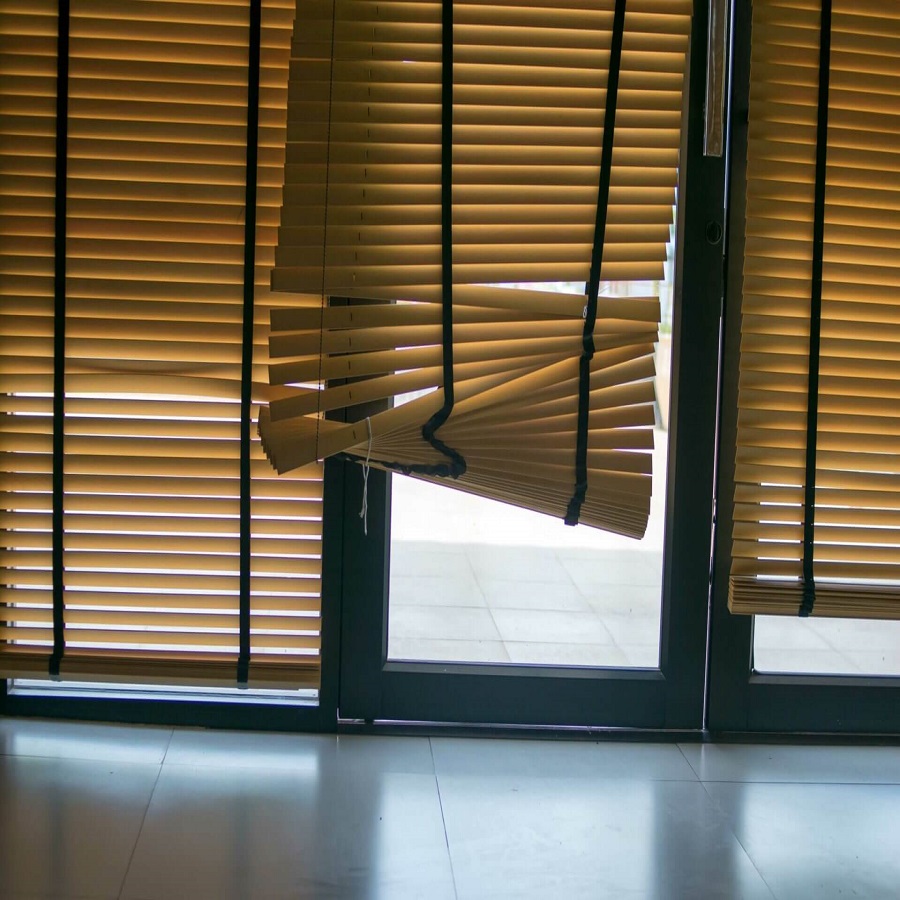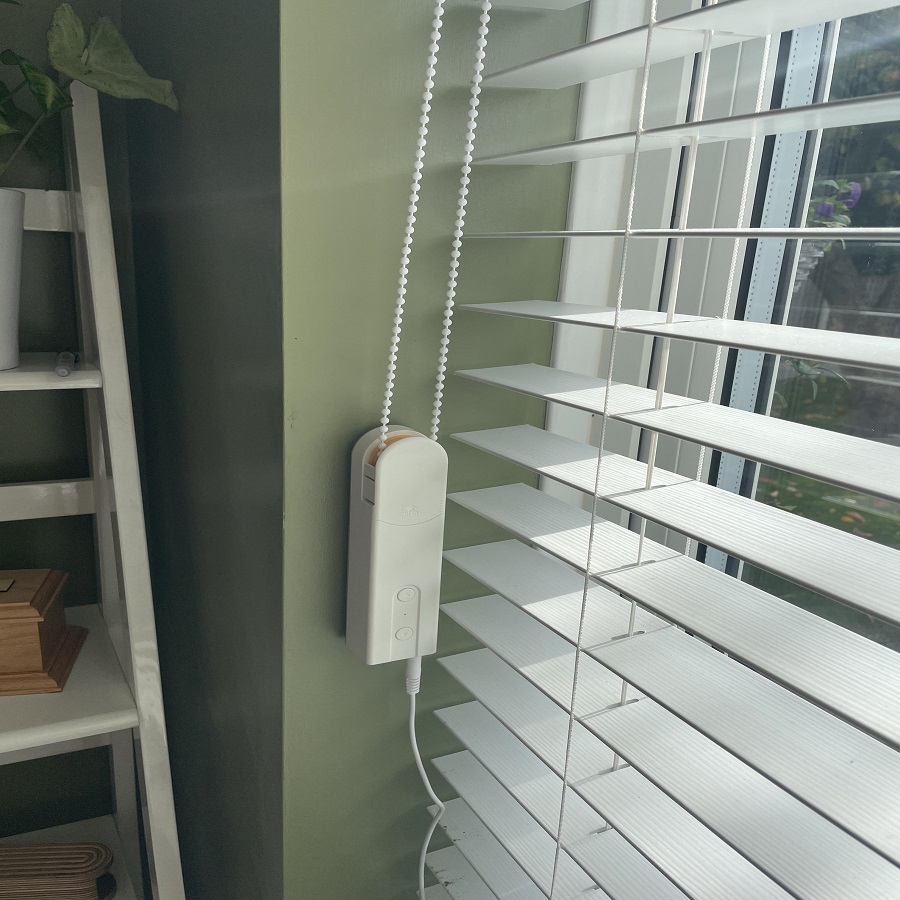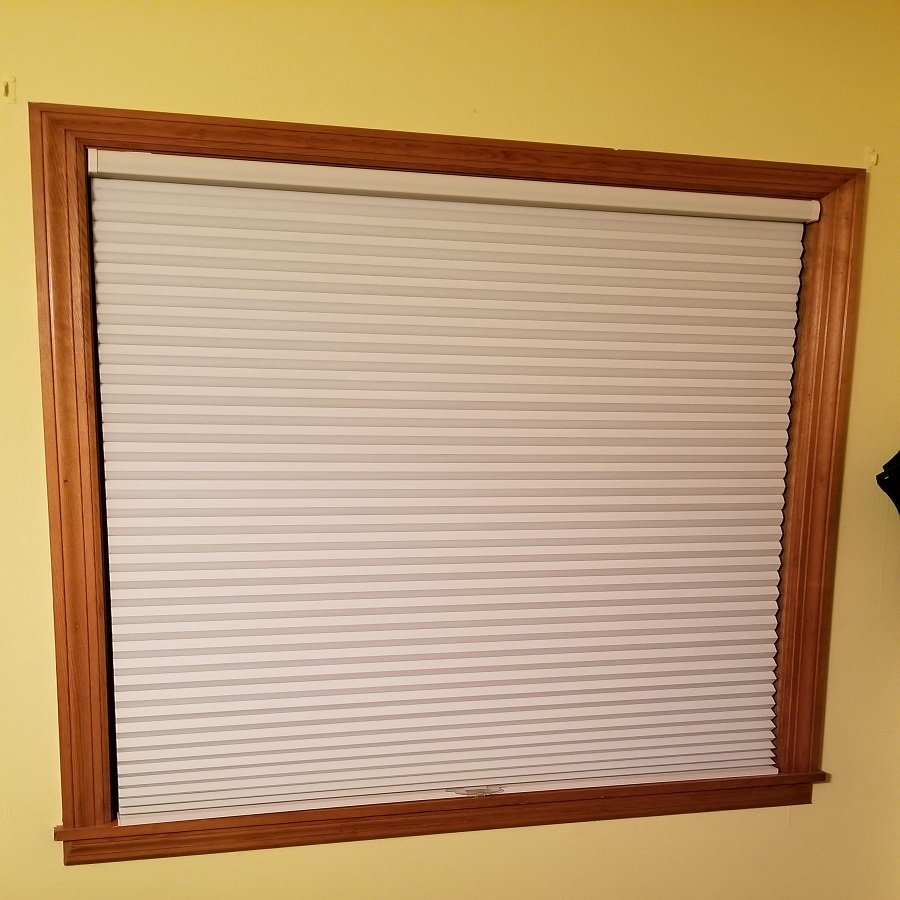Common Blinds String Issues and Diagnosis
How to fix blinds string to open and close – Troubles with blinds strings can vary, but some issues are more frequent. Identifying the correct problem is the first step in any repair process. Here are several usual issues with blinds strings:
- Broken or Frayed Cords: If cords appear frayed or snapped, the blinds will not operate smoothly.
- Tangled or Jammed Cords: Cords that are tangled or jammed in the headrail prevent blinds from moving.
- Loose or Snapped String Ladders: These are the vertical strings connecting the horizontal slats, and if damaged, they can cause uneven or stuck blinds.
- Worn Out or Disconnected Tilt Wand: In Venetian blinds, a tilt wand issue might halt the tilting function.
- Damaged Pulley System: Any wear in the pulleys can make it hard to raise or lower the blinds.
Once you’ve pinpointed the issue, you can gather the tools and start your repairs. But before getting hands-on, it’s vital to exercise specific safety measures, which we’ll cover next.
Safety Precautions Before Starting Repairs
Before you begin repairing your blinds strings, safety must be your top priority. Here are essential tips to ensure a safe repair process:
- Turn Off Nearby Electronics: Ensure all electronic devices near the work area are off. This reduces the risk of electrical hazards.
- Use Proper Lighting: Work in a well-lit area to see what you’re doing clearly and avoid mistakes.
- Wear Protective Gear: Gloves protect your hands from sharp objects and splinters from the blinds. Safety goggles keep your eyes safe from flying debris.
- Keep a Clean Workspace: Remove any unnecessary objects from your work area. A clutter-free space minimizes the risk of accidents.
- Be Mindful of Your Tools: Always handle tools with care. Make sure they are stored safely when not in use.
- Secure the Blinds: Before working, ensure the blinds are securely held. They should not move or sway as you work.
By following these precautions, you can safely proceed with the string repair on your blinds.
Tools and Materials Needed for Blinds String Repair
Before attempting to fix a blinds string, gather the necessary tools and materials. Here’s what you need:
- Replacement Blind Cord: Ensure it matches the type of blinds you have.
- Scissors: For cutting old cords and trimming the new cord.
- Screwdriver: Needed for opening the headrail and adjusting mechanisms.
- Tape Measure: To measure the length of cord needed.
- Lighter or Matches: For sealing the ends of nylon cords to prevent fraying.
- Tweezers or Needle-nose Pliers: Useful for grabbing hold of cords within tight spaces.
- Masking Tape: Helpful for temporarily securing cords during repairs.
Ensure all materials are of good quality to avoid repeated repairs. This preparation enhances the efficiency and durability of your blinds string repair.
Step-by-Step Guide to Fixing a Broken Pull Cord
When you encounter a broken pull cord, it can be a hassle. However, with the right steps, you can fix it quickly. Here’s a simple guide to help you restore the functionality of your blinds.
- Identify the Problem: Check if the pull cord is frayed or completely snapped. A frayed cord may only need trimming, while a snapped one requires replacement.
- Gather Your Tools: You’ll need a new cord, scissors, a lighter, and a screwdriver. Make sure you have these on hand before starting.
- Remove Blinds: Before you start, take down the blinds for easy access. Lay them on a flat surface.
- Open Headrail: Use the screwdriver to open the headrail. This is where the cord mechanism is housed.
- Remove Old Cord: Gently pull out the damaged cord. If it’s frayed, cut the damaged part with scissors.
- Attach New Cord: If you’re lengthening the cord, join the new and old ends. Seal with a lighter.
- Thread the Cord: Carefully thread the new cord through the blinds’ mechanisms. Follow the path of the old cord.
- Secure and Test: Knot the end of the cord and test by pulling. Adjust as needed for smooth operation.
By following these simple steps, you should be able to fix your blinds’ broken pull cord. If you find the repair process challenging or beyond your comfort, consider seeking professional help or opting for replacement blinds.
Guide to Replacing a Broken Tilt Cord
Replacing a broken tilt cord involves a few detailed steps. First, remove the blinds from their brackets to access the tilt mechanism. Start by laying down the blinds flat. Carefully remove the old cord from the mechanism. It may require scissors for cutting it out. Take the new replacement cord and tie a knot in its middle. Feed it through the hole in the spool of the tilt mechanism. Wind one end of the string around the spool in one direction, and the other end in the opposite direction. Make sure the strings run through every component correctly. Replace the blinds in their brackets and test the new cord by tilting the blinds. If it works smoothly, you’ve successfully replaced the broken tilt cord.
 Preventing Future Pull or Tilt Cord Damage
Preventing Future Pull or Tilt Cord Damage
To minimize wear and tear on your blinds cords, regular maintenance is key. Here are several preventative measures to extend their lifespan:
- Inspect Regularly: Check cords for signs of wear, like fraying or kinking, often.
- Gentle Use: Avoid pulling cords too harshly. Gently raise and lower your blinds to prevent damage.
- Proper Installation: Ensure blinds are correctly installed to avoid unnecessary strain on cords.
- Keep Clean: Dust and clean your blinds regularly. This prevents dirt buildup that can harm the cords.
- Avoid Overextension: Don’t lower the blinds more than necessary. Overextending can stress the cords.
- Cord Protectors: Consider using cord protectors or a cord shortener to shield from wear.
By following these simple yet effective tips, you can help prevent future damage to the pull or tilt cords of your blinds.
Repairing Blinds String: Basic Techniques – how to fix blinds string to open and close
When your blinds string needs a quick fix, start with basic repair methods. These techniques are often enough to solve common problems without extensive effort.
Step 1: Diagnosis
First, identify if the blinds string issue is minor. Look for loose, tangled, or slightly worn strings.
Step 2: Adjust Tension
Adjust the tension if the strings are too loose or tight. Tighten by pulling slightly and tying a secure knot.
Step 3: Untangling
Carefully untangle any knots or snags in the blinds string. Use tweezers or small pliers to gently pull strings apart.
Step 4: Trim Frayed Ends
If the ends of the strings are frayed, trim them with scissors. Seal the ends with a lighter to prevent further fraying.
Step 5: Test the Repair
After making adjustments, test the blinds. Ensure they open and close smoothly.
These basic repairs can prolong the life of your blinds and avoid more serious problems. Always handle blinds strings gently to maintain their condition.
Advanced Blinds String Replacement Techniques – how to fix blinds string to open and close
When dealing with more complex blinds string issues, advanced techniques may be necessary. Below, we break down the steps to replace a blinds string entirely.
Step 1: Remove the Blinds
Take down the blinds and lay them on a flat surface. It makes the process easier.
Step 2: Access the Headrail
Open the headrail with a screwdriver to expose the internal mechanisms.
Step 3: Remove the Broken String
Gently pull out the old blinds string. Use scissors if it’s tangled or knotted.
Step 4: Thread the New String
Carefully feed the new string through the blinds, following the exact path of the old one. Use the pictures you took for reference.
Step 5: Secure the String
At the bottom of the blinds, tie a strong knot in the new string. This prevents it from slipping through.
Step 6: Reassemble and Test
Put the blinds back up and test the new string by opening and closing the blinds.
By adhering to these advanced techniques, you’ll ensure a smooth and reliable repair. Remember that regular inspection and maintenance can help avoid the need for these more involved repairs.
If you find these steps daunting, don’t hesitate to reach out to professionals who can ensure your blinds are fixed correctly, with the right tools and expertise. Trust in your skills, or opt for professional help when necessary.
When to Replace Your Blinds Instead of Repairing
Repairing blind strings can be cost-effective and satisfying. Yet, sometimes a repair may not be the best option. If you face any of these situations, consider replacing your blinds:
- Age and Wear: Blinds that are several years old could be nearing the end of their lifespan. If they’re showing signs of extensive wear, new blinds may be more practical.
- Repeated Issues: Are you fixing the same problem over and over? It might be time for new blinds. Constant repairs can add up, making replacement more economical.
- Outdated Style: Home decor evolves. If your blinds look outdated, replacement can refresh your space.
- Safety Concerns: Older blinds with cords can be unsafe for children and pets. Modern, cordless blinds offer a safer alternative.
- Better Functionality: New blinds may offer features like improved energy efficiency, easier operation, and better light control.
- Major Damage: If the blinds have significant damage, such as bent slats or a broken lift mechanism, repair might not be feasible.
When deciding, balance repair costs against the benefits of new blinds. Sometimes, investing in new blinds is the smarter choice for the long term. If you have decided to replace, check out a range of window treatment options that suit your needs and budget.
 FAQs on Blinds String Repairs – how to fix blinds string to open and close
FAQs on Blinds String Repairs – how to fix blinds string to open and close
When faced with blinds strings issues, you may have questions. Here are answers to common FAQs:
How Do I Know if I Can Fix My Blinds String Myself?
Check your warranty first. If it’s expired, DIY repair is an option. Review repair guides and assess if you have the right tools.
What Should I Do if My Blinds String Is Frayed?
Trim the frayed part and seal with a lighter. If it’s severely damaged, replace the string.
Can I Replace Blinds Strings Without Professional Help?
Yes, if you’re comfortable with tools and follow detailed instructions.
Where Can I Find Replacement Blind Cords?
Look at hardware stores or contact the manufacturer. Make sure to match the type to your blinds.
How Long Does It Take to Fix Blinds Strings? – how to fix blinds string to open and close
Basic repairs might take minutes. Advanced replacements could take an hour or more, depending on your skill level.
Are There Safety Risks When Repairing Blinds Strings?
Yes, always follow safety precautions mentioned in the repair guide. Ensure a safe workspace and handle tools carefully.
What If I Can’t Fix the Blinds Strings Myself?
Seek professional help. Repairs can be tricky and professionals have the right tools and knowledge.
Should I Repair or Replace My Blinds?
Assess the age and condition of your blinds. Frequent issues or outdated styles might mean it’s time for replacement.
What Tools Will I Need for a Blinds String Repair?
You’ll need a screwdriver, scissors, replacement cord, a lighter, tweezers or pliers, and masking tape.
How Can I Prevent Future Damage to My Blinds Strings?
Regularly inspect and gently use your blinds. Keep them clean and avoid overextending the strings.
Hopefully, these FAQs address your concerns about blinds string repairs. If you’re unsure, always err on the side of caution and contact a professional.
